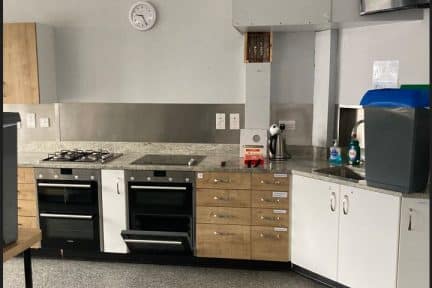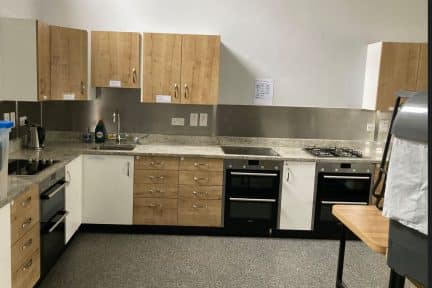‘Womanly attributes’: Domestic Science and the arts.
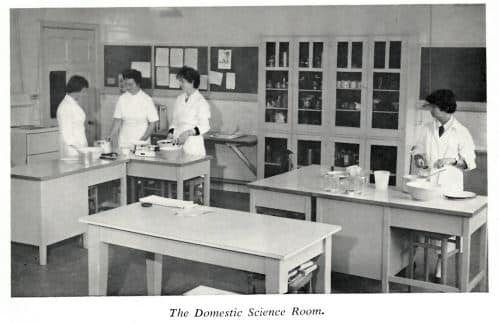
Domestic science were areas of big difference between the girls’ and the boys’ schools, as boys did not have to learn cookery or sewing, although they did do art and drawing. It is likely that this was to appease parents with sending their girls to school by getting the girls to learn ‘female’ qualities along with maths, history and geography etc. Initially girls were taught how to sew and mend clothing and needlework added by Miss Dugdale in early 1870s. After 1875, these subjects came together to form Domestic economy, whilst boys were taught political economy- once again reflecting the ideological spheres of girls being within the home and boys in the public political sphere. Girls were also taught singing and music, and Mr Cramer, organist at the Parish Church was recruited as a visiting master to assist the girls in singing.
Domestic Economy continued as the school moved to Burton walks. The school information booklet from Miss Walmsley period as Headmistress (1897-1919) highlights these differences very clearly. As you can see, on the left are the listed the regular school subjects which would have been the same as the boys. On the right however is the list highlighting the ‘Housewifery course’ or subjects within Domestic economy, including cookery, dressmaking, laundry, hygiene, letter writing, household accounts and mending. Extra subjects included dancing and elocution, which were other ladylike accomplishments.
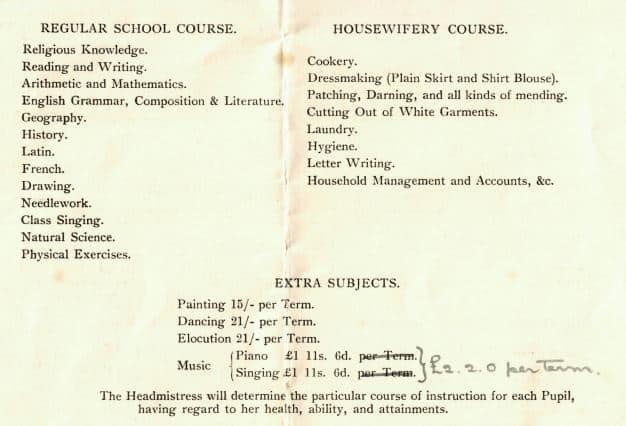
Between 1907-1911, the High School got a big extension as it outgrew the existing building. This extension included the big hall, four new classrooms and a domestic science room, giving a specific space for this subject. As we can see from the school information books from the 1930s, during Miss Bristol’s Headship, and the book from that of Miss Andrews (1940-62), these subjects of ‘cookery, laundry work, housewifery and needlework’ combined together as ‘Domestic subjects’ continued into the 1960s – the same language is used in both prospectuses despite the changing of Head.
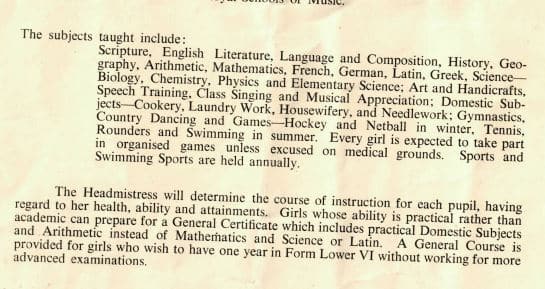
Wartime affected domestic science in that they were mainly theoretical as there were no spare ingredients for cookery. One alumna remembers a time when girls were taken to the Old Library and learned to scrub the floor. However, as we can see from this photograph in 1949, despite rationing continuing into the 1950s, girls were able to cook once again.
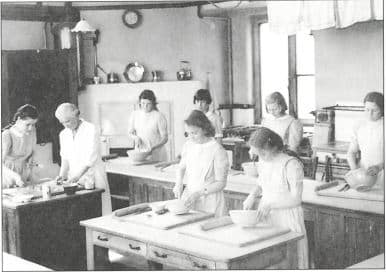
This photograph of the Domestic Science Room from the 1960s school prospectus highlights some changes. It shows a bright and airy room with new equipment and the girls wearing overalls or ‘lab coats’, rather than aprons. This particularly suggests a lean towards ‘science’, rather than a concentration on domestic skills and the creation of the girls into housewives. Although in the same prospectus, Domestic science is still cited as ‘Cookery, Laundry Work, Housewifery and Needlework.’

The prospectuses from the 1970s onwards change their wording on domestic science, with the 1970s booklet calling it “cookery and needlework” and from the 1980s onwards “home economics”.
Since this later period, needlework has now been connected to art and textiles. Cookery/home economics is now called ‘food’ or ‘food technology’, which focuses more on food, nutrition and health making it more connected to science, rather than domestic skills to be used in the home as it was previously. Girls study for qualifications and several now go on to studying nutritional science at university.
Approximately 10 years ago, the food room got another update, making it the modern, light and full equipped kitchen space it is today for girls to experiment with nutrition and cooking.
